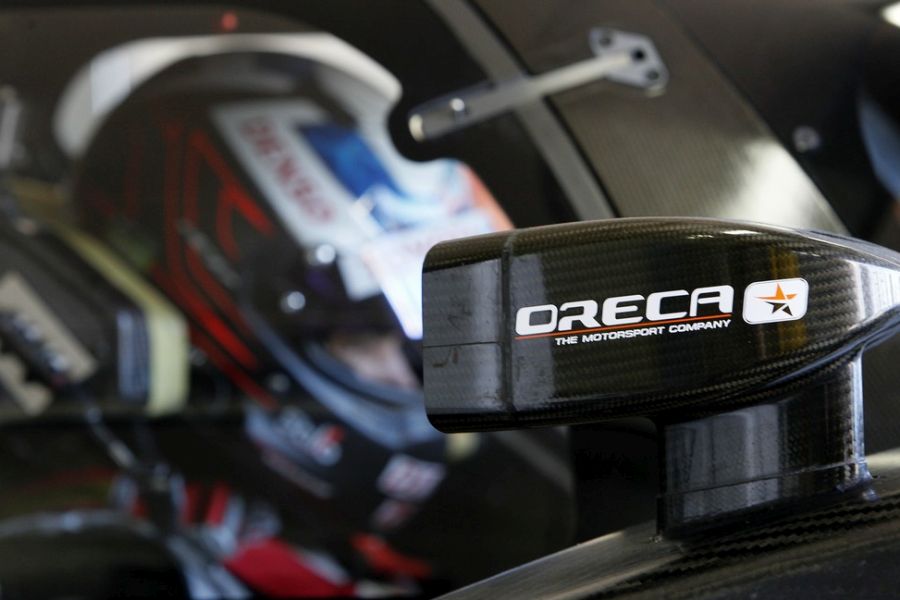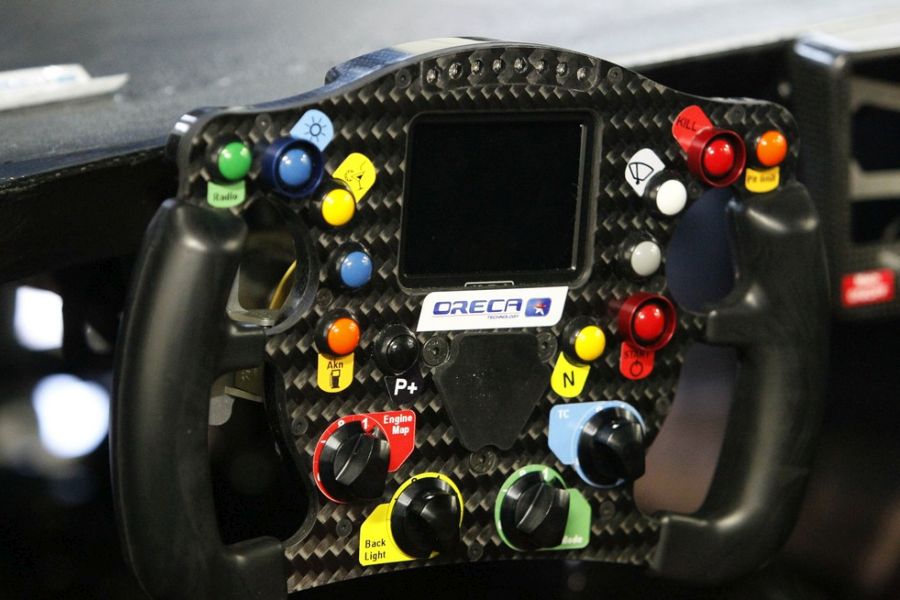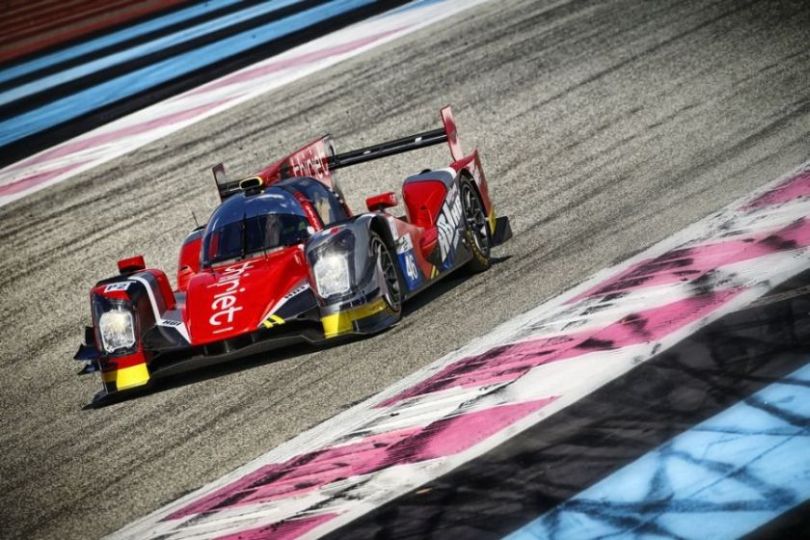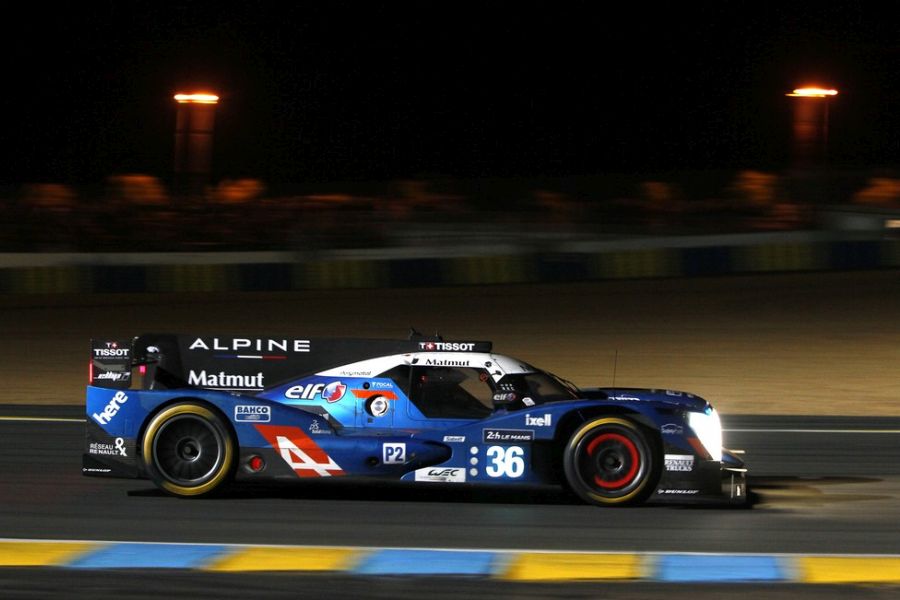With two Le Mans wins Oreca 05 already acomplished its mission
When you are building the LMP (Le Mans Prototype) car, your main goal is, (as the name itself reveals) to win the famous Le Mans race. For the Oreca 05 prototype, introduced in 2015 by the French manufacturer ORECA (Organisation Exploitation Competition Automobiles), the goal was fulfilled in the first year of the competition.
In July 2015, the winning team in the LMP2 class of the 24 hours of Le Mans was the Hong Kong-based KCMG with the #47 Oreca 05. A year later, in June 2016, one more Le Mans victory for Oreca 05 chassis followed, this time, rebranded as Alpine A460 and driven by the #36 Signatech Alpine crew. In both cars, the winning power came from the Nissan’s VK45DE 4.5-litre V8 engine.

Oreca is producing LMP prototype since 2009
ORECA built its first P2 prototype in 2011
The roots of the Le Mans winning Oreca 05 are in its predecessor Oreca 03, built in 2011. It was the car that marked ORECA’s switch from P1 to P2 class. The Oreca 03 was the open-cockpit prototype built under the new-2011 regulations. The carbon fiber monocoque car used the similar body and aero packages as the previous ORECA cars in the LMP1 class.
Nissan’s engine was the choice of the most
The rules for 2011 required the use of the production-based engine. The variety of engines was offered for Oreca 03 chassis but most of the teams chose the Nissan’s 4.5-litre V8 powerplant, originated from the Nissan GT-R and used by Nismo team in the Super GT series. Only the Swiss team Race Performance opted for Judd-BMW 3.8 V8 engine. Both engines produced a limited amount of 460 bhp.

The closed-cockpit Oreca 05 was introduced in 2015
The close-cockpit Oreca 05 is different from LM predecessors
For the 2014 season, the revised Oreca 03R was introduced, as a preparation for a completely new prototype that followed in 2015. Unlike its predecessors, the Oreca 05 is the closed-cockpit prototype.
Oreca 05 features many mechanical and safety components not used in the Oreca 03. One of the new safety features is the zylon anti-intrusion panel that is built into the frame to prevent any mechanical components from the outside to intrude into the chassis in the case of an accident. The car also comprises a rear crash box that has been certified via rear crash test.

ORECA used an experience from previous models to build a perfect LMP2 car
Many improvements and modifications
Compared with the previous LMP2 prototypes, some components have been upgraded and modified, for example, power steering system (which is now electric), starter or six-speed sequential gearbox, that features a more compact latest-generation casing. The engine choice was again free for customer teams, but all opted for the proven Nissan’s VK45DE powerplant.
Oreca 05 is narrower than rivals
The 4640mm long and 900kg weight Oreca 05 is a little bit smaller than the rival LMP2 cars because the frame is 1900mm wide while almost every car has a 2000mm frame. It was engineer’s choice that already meets the 2017-regulations. The new rules also demand closed-cockpit LMP2 cars, so it means that in 2015, the Oreca 05 was already prepared for racing in 2017.
This decision was a big advantage for all customer teams in terms of planning the budget, because they weren’t limited to a two-year period, on the contrary, they could potentially spread the investment for more than four years because the new regulations package could be potentially valid at least until 2020.

The #46 car of Thiriet by TDS Racing
Oreca 05 had competitive debut in April 2015
The Oreca 05 had its competitive debut in April 2015, in the opening rounds of the FIA World Endurance Championship and European Le Mans Series at Silverstone. The #47 KCMG car was representing the ORECA’s newest masterpiece in the world’s competition while the #46 car was driven by the Thiriet by TDS Racing’s crew in the European LeMans Series.
2015 24 hours of Le Mans victory for KCMG’s #47 Oreca 05
The maiden victory came in May, at the second ELMS round at Imola, with Pierre Thiriet, Ludovic Badey and Tristan Gommendy sharing the cockpit of the #46 car. The greatest success followed one month later, at Le Mans, where Matthew Howson, Richard Bradley and Nicolas Lapierre brought the #47 car to the LMP2 victory in the world’s greatest endurance race.

2015 Le Mans winning car
Numerous wins in the ELMS and FIA WEC
By the end of the 2015 FIA WEC season, the #47 car added one more win (Nürburgring). KCMG’s drivers Howson and Bradley finished second in the LMP2 world championship classification. In the 2015 ELMS season, Thiriet and Badey scored one more win in Estoril, together with Nicolas Lapierre, and they finished second in the final standings.
In the 2016 ELMS season, the line-up of Oreca 05 cars expanded to three vehicles, with Dragonspeed and Eurasia Motorsport as the new customers. The #46 Thiriet by TDS Racing car is dominating and it scored three wins in four races.

LMP2 class winner at 2016 Le Mans race
In 2016, Oreca 05 was successful across the Atlantic too
In the 2016 FIA WEC season, four different teams are using the Oreca 05 chassis (Manor, G-Drive Racing, Signatech Alpine and Baxi DC Racing). The #36 Signatech Alpine crew scored four wins, at Spa, Nurburgring, Austin and at 24 hours of Le Mans. The winners at Circuit de la Sarthe were Nicolas Lapierre, Gustavo Menezes and Stephane Richelmi.
In March 2016, ORECA also makes a step across the ocean, with Dragonspeed team competing in the 12 hours of Sebring, which was the part of the IMSA WeatherTech SportsCar Championship. The #81 car, driven by Nicolas Lapierre, Nicolas Minassian and Henrik Hedman, took sensational fourth place in America’s oldest endurance race.
Photos: oreca.com,








